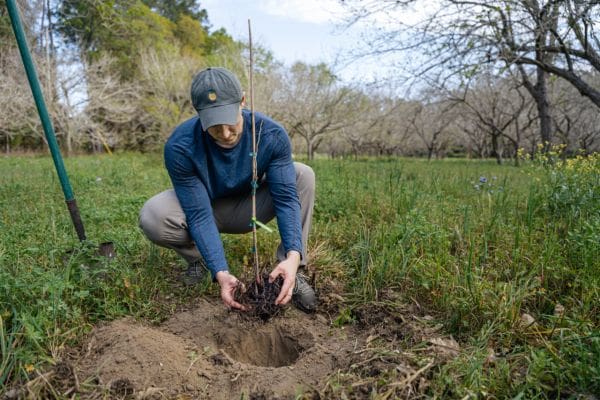As spring approaches, so does another planting season. Proper planning and preparation will make planting more efficient and effective. Chestnut Hill Outdoors provides insight on how to prepare for the upcoming spring planting season.
Stock Selection
It is always a good idea to select stock early to avoid hasty choices, stock shortages, and disruptions in the supply chain. Chestnut Hill Outdoors has a range of hard and soft mast-producing trees and shrubs to suit any planting plan. Landowners should select species based on their suitability to the local climatic conditions – the USDA Plant Hardiness Zone Map helps determine local conditions. Chestnut Hill Outdoors lists these Zones for each plant species and carefully checks every order to ensure they are appropriately suited to their destinations.
Soil
Whether planting food plots or mast orchards, all spring preparation begins with the soil. Plant species have different soil moisture, pH requirements, and tolerances, varying throughout a particular property. Chestnut Hill Outdoors lists soil moisture and pH requirements for all the plants they sell. A simple and inexpensive soil test will provide information on existing conditions and recommendations on mineral and fertilizer treatments if necessary. County Soil Survey maps are also helpful in matching plant species to sites with optimal soil types and moisture regimes.
Spacing and Pollination
A planting plan should include not only species but also their placement. Different species have different spacing and pollination requirements. Some grow tall, narrow central leaders and can be planted closer together. Others form broader shrubs, clumps, or colonies that need more growing space. Young plantings may seem unnecessarily spaced initially but will fill in over time.
Pollination is essential to plant production. Some species, like mulberries, are self-pollinating or self-fertile and will produce independently. Others, like persimmons and apples, require multiple trees of the same species to pollinate and produce fruit. Even self-pollinators will increase production if planted among species that attract active vectors like birds, insects, bats, and other animals visiting the flowers and transferring pollen.
Other
Planters must consider other variables when planning for spring, such as sunlight exposure, elevation, slope, soil condition, moisture, and micro-climates. Some variables, like late spring freezes, cannot be controlled but can be predicted and prepared for. Preparation includes having sufficient protective measures like grow tubes and frost cloths on hand should they be needed, especially when cutting, mowing, or herbicide application are required.
Patience
Once the stock is selected and ordered and a plan prepared, it is just a matter of waiting for the right conditions to begin working, which is much better than waiting an entire season due to improper preparation.
About Chestnut Hill Outdoors
Chestnut Hill Outdoors is the best place to purchase food plot and deer attractant plants because they offer a large selection, their plants are specifically bred to attract deer, and they offer customers different-sized plants at different levels of growth. To ensure you receive the maximum benefit from their products, they also provide sound advice and instruction on proper planting and care. For more on Chestnut Hill Outdoors products and how to care for them, visit ChestnutHillOutdoors.com or call (855) 386-7826.
For more information, please visit
WWW.CHESTNUTHILLOUTDOORS.COM
Read the full article here




